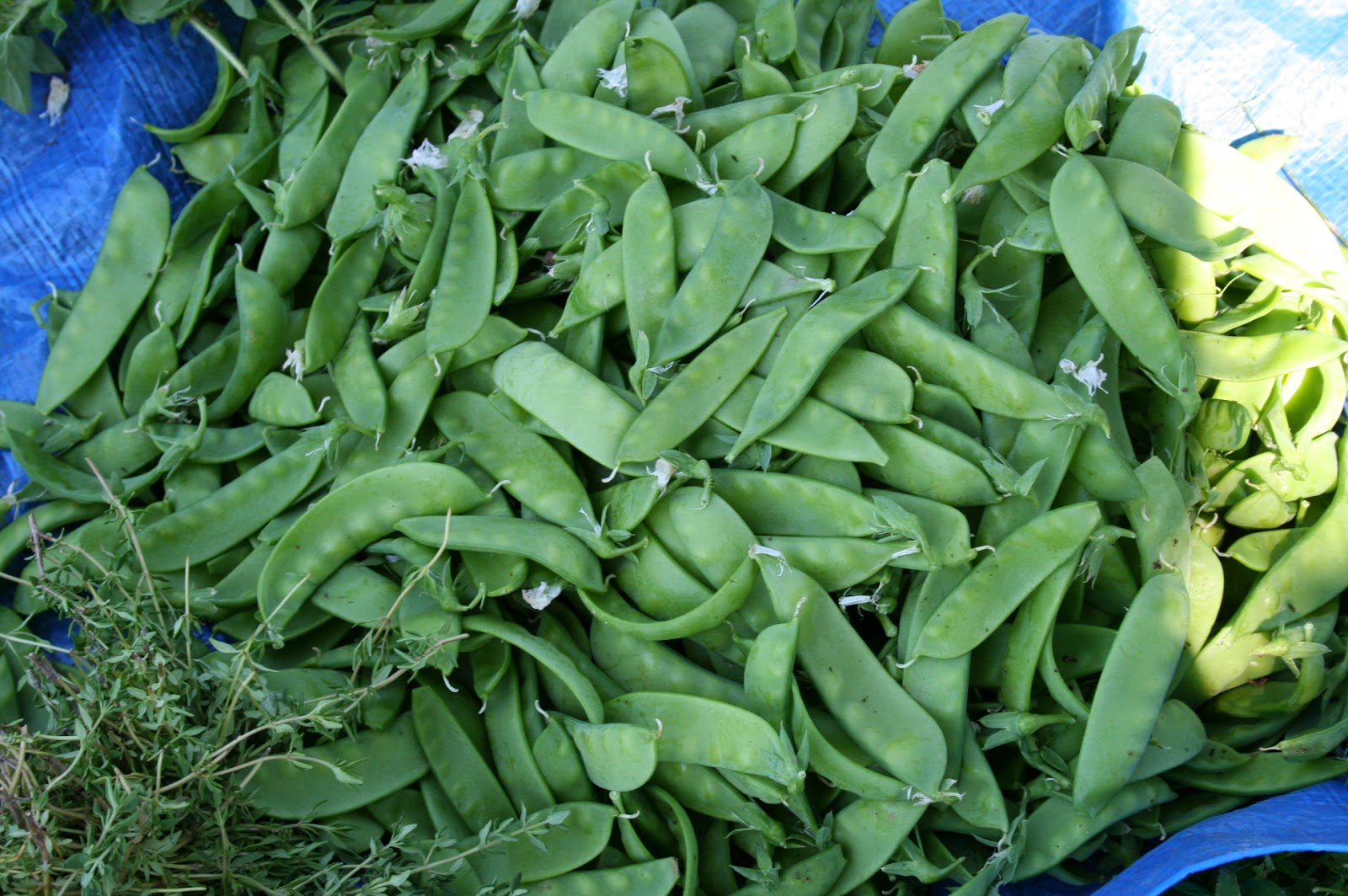Larry Kloze gave a talk at the
garden on Monday evening, June 16, 2014. This is a summary of some of
the points of his tour and talk:
Raised beds provide additional
root space for plants.
We utilize wide row, intensive
planting; plants are close together so it’s difficult to see the soil, and
therefore there are few weeds as the sun is blocked.
Kale, Swiss chard, and
collards are planted in the spring and last though the summer.
Due to a very cold winter this year we anticipate far fewer
bugs.
Succession Planting (a kind of rotation planting) uses the same bed for several
crops; e.g.
After a bed of lettuce is harvested beans are planted in the bed. After the beans
are harvested beets are then planted.
Horse radish serves as a “catch crop” for bugs.
Bush beans require no support. Pole beans, which are equally
prolific, don’t require you to bend over to pick them.
In our organic garden, no chemical fertilizers or pesticides
are used. Plants need food and the mushroom compost helps replenish the
plants.
The text, Crockett’s
Victory Garden, describes mixing in new compost to renew nutrients when one
crop is finished.
Mulch can be used in beds to both suppress weeds and retain
moisture.
Triangulate planting takes up less space and maximizes the
number of plants per bed.
Companion Planting – when two plants go well together and can
be planted simultaneously; e.g. bushes under trees, or shallow rooted plants
(tomatoes) with deep rooted plants (carrots) There is a text with the title Carrots Love Tomatoes.
Garden water Is provided by the city and we currently use
dozens of connected hoses to access water from down the hill. As a result there
is very low water pressure making it impossible to water the entire garden all
at once. To solve this problem the
water timers are set to four different zones in the garden. It’s best to water
at night. If there’s no rain we water every other day. One inch of water a week
is sufficient for the crops. There is a simple measuring device in the garden
to keep track of how much water the garden gets each week.
This year Swiss Chard was protected this year from leaf miters that
tunnel into the leaves. This was done by covering the crop with a spun fabric, reemay, that
still allows water, sun, and air to penetrate. This is in contrast to last
year’s problem with cucumber beetles. This crop can’t be covered because it
needs to pollinate – and the crop was lost.
There are two kinds of tomato plants, determinate and
indeterminate. Determinate plants stop growing while indeterminate plants keep
growing. This ever-growing kind of plant is typical of those producing big
sandwich tomatoes.
You can freeze whole tomatoes in a plastic bag. You can
freeze peppers after pulling the seeds out. There’s no need to blanche these vegetables before freezing and they can be used
for spaghetti sauce upon defrosting.
Tomatoes and peppers like acidic soil (low ph) and we
augmented the soil with lyme when planting them this year. For high ph soil,
add sulfur in the form of match tips.
Plant tomato plants on their side. Take off all but the
uppermost leaves. Dig a trench. Pillow the soil for the leaves. Tomatoes sprout
new roots from their stems and this process will increase the root area and
produce more vigorous plants.
It takes 6 feet of space for 3 watermelon plants in a bed vs.
the very dense plantings that beets and beans thrive on – consequently yielding
much more food per sq. ft.
Containment is an important concept, particularly in urban
gardening (maximizing land use); e.g. have peas grow up on a fence in order to use less land.
Cucumbers grown on the ground become yellow on the bottom
side that lies on the dirt. This is not the case when they are grown on trellises.
To avoid the time consuming, pain staking process of thinning
carrots, mix the seeds with rice or sand and then sprinkle the mixture to plant
the crop.
In the past you could never make a BLT sandwich using the L
& T from the garden as they are harvested at different times. This year the
heat tolerant lettuce should make this a possibility.
The composter is the “heart of the garden” and needs to be
cared for as you would a pet. You “work” the compost; it needs to be turned in
order to aerate it, chopped, and watered. It is a habitat for micro-organisms.
No oil products should be added to the compost - they keep the material from
breathing. Don’t let weeds go to seed before adding them to compost. Otherwise
a temperature of 160 degrees F. should kill the weed seeds.
Peas won’t survive into summer as they are a cool crop
vegetable. Cucumbers will be planted in the pea bed after the peas are
harvested and the trellis used again for the cucumbers.
Beets are a wonderful crop to interplant as they have shallow
roots and grow low. They also are heat tolerant and grow all summer.
Pyrethrum and diatomaceous earth, organic products, are being
used on the eggplants to battle bugs. (Thank you Robin!)
Last year’s zucchini crop was destroyed by vine borers. One
solution is to slit the stem and remove the borer.
Zucchini, okra, and cucumbers may grow so fast as to warrant
a mid week harvest.
The Perennial Garden:
When you cultivate perennials in a regular vegetable garden,
you risk disturbing the perennial plants when planting annual crops. Therefore
the garden has designated separate beds for perennials.
Asparagus take three years to establish but live 50-60 years.
Rhubarb leaves are POISONOUS. Just eat the stems.



























